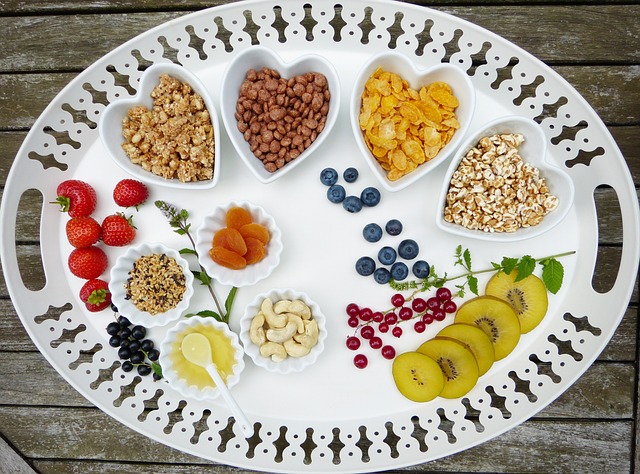What is Healthy Eating?
What is healthy eating? That’s a question our ancestors never had to answer because they never had to ask it. Eating healthy was second nature for them because everything they ate was natural (though natural and health are not always synonymous.
Unfortunately, we have made eating healthy a real challenge. It has become far easier to eat unhealthy than it is to eat healthy. In our fast paced society we have an array of convenient foods, many unhealthy, at our disposal.
Healthy Defined
Defining “healthy” is not so easy it turns out. The FDA issued a guidance on the use of the term “healthy” for food labels. But defining “healthy” for food labels is much different from defining healthy eating – our purpose today.
But, here are some simple pieces of advice or rules you can apply enabling you to eat healthier.
- Only buy and eat foods found on the perimeter of the grocery store.
- Don’t eat anything found in a can, box, or jar.
- Don’t eat anything your great-grandmother would not recognize as food. Chances are your great-grandmother never saw Snickers, Pringles, or a frozen dinner.
- If it swims in the water, flies in the air, falls from a tree, or grows from the ground, it is likely healthy to eat. There are no Oreo plants, Fruit Loop trees, ice cream animals, etc.
Criteria of Healthy Eating
- Provide adequate calories.
- Provide all necessary nutrients.
- Should promote hormonal responses that facilitate weight management.
- Provide adequate fiber.
- Be free of toxins.
Adequate Calories
A healthy diet has to provide enough calories to provide enough energy to power the body but not anymore than needed to maintain a healthy weight. That becomes a delicate balancing act.
If trying to lose weight then you must consume fewer calories than your daily needs yet enough food to provide all the essential nutrients. The best way to do that is to avoid foods that represent empty calories – foods low in nutritional content yet high in calories like soft drinks, candy, and snacks.
A deficiency in just one nutrient can derail your health. This can be avoided by eating a variety of foods especially fruits and vegetables which is where we get most of our minerals and vitamins.
But, you also need an adequate amount of fat. Some fat is necessary. Fats make our cell walls that allow nutrients to enter the cell and waste to exist the cell. Fat also provides protective cushioning around our vital organs.
Hormonal Responses
In discussing hormonal responses we are mainly talking about the release of insulin. We have discussed this in several articles. Insulin is a hormone produced by the pancreas and released in response to a meal. It drives sugar (from the recent meal) into the cells where it is converted into energy.
All of that sounds good and it is. The problem is insulin is a fattening hormone. It drives excess calories into fat stores. And, if insulin levels remain high it is difficult to burn calories from fat store even if exercising. Therefore, you want to keep insulin levels low as a possible.
The best way to do that is to eat low glycemic foods – foods that do not trigger an excessive rise in insulin.
In What Fiber Can Do For You we discussed the health benefits of fiber including lower risk of heart disease and diabetes. Fiber also improves cholesterol levels, facilitates weight loss, and reduces risk of gastrointestinal disease.
Free of Toxins
We live in a toxic environment. A toxin is anything that is dangerous or injurious to our health. There are toxins in the plastics that contain our foods, in the ground that grows our foods, in the water that hydrates our bodies, the pesticides we spray on our fruits and vegetables to keep them free of disease, and the meats that we consume.
 Consider organically grown foods and meats from animals and poultry not treated with hormones and antibiotics and animals/poultry grass-fed rather than corn-fed.
Consider organically grown foods and meats from animals and poultry not treated with hormones and antibiotics and animals/poultry grass-fed rather than corn-fed.
Composition of a Healthy Diet
The Dietary Guidelines for Americans 2015-2020 states that healthy and nutrias meals should consist of the following:
- Includes fruits, vegetables, whole grains, and fat-free or low-fat milk.
- Includes lean meats, poultry, fish, beans, eggs, and nuts.
- Is low in saturated fats, trans fats, sodium, cholesterol, and added sugars.
- Meets an individual’s daily caloric needs.
In discussing healthier eating we talk about macronutrients and micronutrients. Macronutrients are those nutrients needed in large amounts and micronutrients are those nutrients needed in small amounts. Macronutrients include carbohydrates, proteins, and fats. Macronutrients provide energy and help to build muscles. Micronutrients include vitamins and minerals. Micronutrients facilitate the many physiologic processes performed by the body and help us fight disease.
Variety
The best way to get all the nutrients you need is to eat a variety of foods. When it comes to fruits and vegetables think of the colors of the rainbow and try to eat as many different colors of fruits and vegetables a day trying to get in at least 7 servings a day. This will ensure that you get all the vitamins and minerals your body needs to maximally function.
The time to eat healthier is now.
Eating health takes quite a bit of discipline. Don’t tempt temptation. You are not strong enough to resist. Keep unhealthy foods out of your house and grocery cart.
Eat healthy, stay healthy. Live long, stay young. They go hand in hand.


